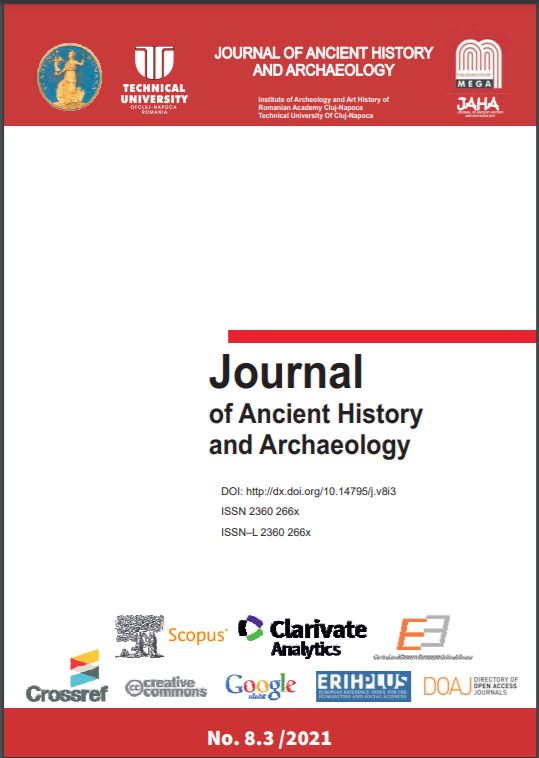VIEWS ON THE SYMBOLIC USE OF TWO RARE BONE FINGER DISTAFFS WITH DOG REPRESENTATION FROM HALUK PERK MUSEUM IN ISTANBUL
VIEWS ON THE SYMBOLIC USE OF TWO RARE BONE FINGER DISTAFFS WITH DOG REPRESENTATION FROM HALUK PERK MUSEUM IN ISTANBUL
Author(s): Ceren Ünal, Zeynep ÇakmakçiSubject(s): History, Archaeology
Published by: Editura Mega Print SRL
Keywords: bone; distaff; dog; Hecate; Haluk Perk Museum;
Summary/Abstract: There are various interpretations on the functions of bone finger distaffs, which are among the important artifacts produced in the ancient world. Some scholars argue that finger distaffs were a symbol of fidelity and virtue and presented to women as wedding gifts, while others claim that in addition to their purely symbolic value, they were used by women in the house to spin the wool yarn needed for weaving besides their symbolic meaning.The Haluk Perk Museum has a rich collection of figured and non-figured finger distaffs of different materials from the Roman and Byzantine periods. There are two bone finger distaffs in the collection that attract attention with their representation of dogs depicted in different forms. In the ancient world, the dog represented loyalty, fertility, healing and purification. Remarkably, the dog was also one of the symbols of the Goddess Hecate, who is associated with witchcraft, which means that one of the other qualities attributed to the dog figure was that it bestowed protective and healing powers against evil.It is believed that the two bone finger distaffs featuring a depiction of a dog as a representation of loyalty were given to women as wedding gifts. In late antiquity, young women who had arrived at the age of marriage were expected, as part of the social roles imposed on them by society, to preserve the unity of the family and be virtuous and good wives and mothers. The finger distaffs prepared to be given to young women as wedding gifts symbolized their status as loyal wife and mother in society. On account of this symbolic value, wives kept finger distaffs for the entirety of their lives, and they were placed in their graves after their death. It is further believed that the finger distaffs featuring a dog depiction were symbols of devotion and loyalty to the spouse, as well as a symbol of fertility for women. Beyond these symbolic functions, the finger distaffs with dog depictions may also have been kept by wives to protect and heal the household from evil and diseases. Based on the depiction of the dog on two bone finger distaffs, this study focuses on dog symbolism and the relationship between the goddess Hecate and the dog in ancient times and discusses the possible symbolic functions of the finger distaffs with dog representations in the life and death of women.
Journal: Journal of Ancient History and Archaeology
- Issue Year: 8/2021
- Issue No: 3
- Page Range: 135-147
- Page Count: 13
- Language: English

